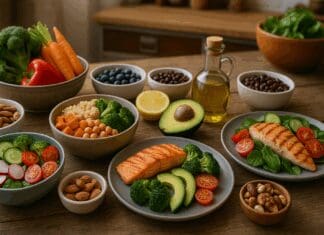Diet & Nutrition
Eating well is the foundation of a healthy life, and at HerHealthWatch, we provide evidence-based guidance on crafting a balanced, nutrient-rich diet tailored to women’s unique health needs. From the latest superfoods to practical meal-planning tips, our Diet & Nutrition section explores how food fuels the body, boosts energy, and supports long-term wellness. Whether you’re looking to optimize digestion, manage weight, improve heart health, or nourish your body through different life stages—from pregnancy to menopause—we break down essential vitamins, minerals, and dietary habits to keep you thriving. Discover expert-backed insights on gut health, plant-based nutrition, hormone-balancing foods, and delicious, easy-to-make recipes that transform your approach to eating well.












